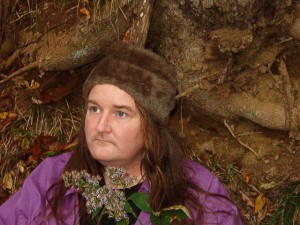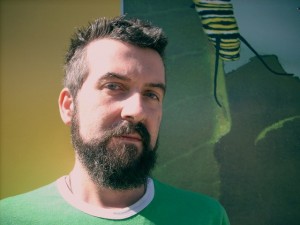CAConrad's and Frank Sherlock's The City Real and Imagined
BY Thom Donovan

 Sunday of this past weekend saw the official New York City launch of CA Conrad’s and Frank Sherlock’s collaborative book-length poem The City Real and Imagined, published by Heretical Texts, at the Zinc Bar reading series hosted by Dorothea Lasky. Among a crowd of friends and admirers the two poets read their book in its entirety, calling forth the city of Philadelphia in both its actual and imaginary dimensions. Focusing this reading, for me, was a brilliant mix of sarcasm and idealism, gallows humor and the desire to build something new out of a city long forgotten by the American dream. Congratulations to two great poets and friends!
Sunday of this past weekend saw the official New York City launch of CA Conrad’s and Frank Sherlock’s collaborative book-length poem The City Real and Imagined, published by Heretical Texts, at the Zinc Bar reading series hosted by Dorothea Lasky. Among a crowd of friends and admirers the two poets read their book in its entirety, calling forth the city of Philadelphia in both its actual and imaginary dimensions. Focusing this reading, for me, was a brilliant mix of sarcasm and idealism, gallows humor and the desire to build something new out of a city long forgotten by the American dream. Congratulations to two great poets and friends!
Introduction for CA Conrad’s and Frank Sherlock’s The City Real and Imagined
Two friends, both poets, walk around the city of Philadelphia together. On returning to their notepad, or desktop, or wherever they write, they draft poems based on their excursions. These excursions, as the title of CA Conrad’s and Frank Sherlock’s The City Real and Imagined evokes, involve journeys into historical fact, but also the facts given by one’s imagination. Dream life, gossip, myth, urban legend, fantasy, reading, overhearing, and storytelling make up the large part of this book, which is a kind of homage to the place of Philadelphia, to friendship, and to an active making within the places where we find ourselves—whether community, institution, neighborhood, locale, polis, province, or nation.
Philadelphia is obviously loaded with significance in terms of national mythology and history. Frank and Conrad capitalize on this fact, both deconstructing the city of “brotherly love” as a failed project, and projecting their own versions of utopia, utopias which indeed revolve around love, friendship, and generosity. It is those who have power and privilege who would wish to live in the past (Frank and Conrad keep reminding their reader of this); so this book is all about the present, and more specifically the possibilities and potentials that issue from our current moment towards the future. Both radical, and practical, and utopian Frank and Conrad are latter day antinomians. The sublimated Protestant spirit of Anne Hutchinson is alive through their discourse, which is one of grace and freedom: the grace to see and read the world for one’s self; the freedom to disagree with another’s version or vision of the world.
The company Frank and Conrad keep in their book says it all. While Ben Franklin—a hero of Conrad’s—makes a cameo, as do poets Alice Notley and Philip Whalen, artists Ryan Trecartin and Annie Sprinkle, and activists such as Derrick Jensen, so do local drag queens, homeless, and prostitutes. As in previous paeans to place—William Carlos Williams’ Paterson comes to mind; so does Ed Sanders' documentary long poem for United States history, and Muriel Rukeyer’s Appalachian U.S.1, not to mention the many poems set in New York after the tradition of New York School poetry—in The City Real and Imagined a polyphony of voices speak through Conrad’s and Frank’s exchanges. Or, to be more specific, Conrad and Frank speak with these voices; such voices are not just ethnographic curiosities but come from people the poets see around, talk with, and with whom they share a conversation. Through this conversation with Philadelphia’s neglected, Conrad and Frank argue for an open public discourse against American hermeticism. What, Conrad and Frank ask,
If drag queens ruled the world
no kabals no secrets
the Temple of Solomon
could be re-imagined differently (36)
In another scene from the book (there is something episodic and cinematic about many of Frank’s and Conrad’s poems), the two poets walk to LOVE park where they discover the park is closed:
NO TRESPASSING!
Robert Indiana
LOVE Park
barricaded
no bongos today
skateboarders peer
through fence
quietly skate
off
ASSHOLE IN SUIT: (laughs)
Guess they closed your
LOOOOOOVE Park huh?!
ME: (sitting on police
barricade) IT’S YOUR
PARK TOO ASSHOLE! (21)
The insistence here that the park belong to the “asshole in the suit” too foregrounds a logic of the public radically threatened during our current moment, something Jules Boykoff and Kaia Sand address in their excellent book Landscapes of Dissent in terms of the actions of PACE, a Philadelphia-based group co-founded by Sherlock which organizes poets to read their poems aloud on street corners and pass out broadsides to passersby.
Regarding the public, here’s another quote:
“Conrad prefers to be private in
a public place. I can’t help but
go public in a private place. He
wrote poems on the South St.
Bridge. I recited poems to a refrigerator.” (60)
In The City Real and Imagined there is no simple opposition of public and private. Rather, the public and private—categories still with us from a Hobbesian age of social contracts and sovereign authority—enfold each other, and contribute to each others’ making. They are, in other words, always in relation. And it is this relationship which The City Real and Imagined tests.
Exceeding these categories is something more essential, a kind of emotional-somatic fundament, what Conrad and Frank call “a river / beneath our lives / no one steps in.” (74) What would it mean to step in this “river” that runs under our living among others? Call it an affective economy, or the general intellect, or multitude, or merely the shared mythos every place accretes and of which every one participates. It is a current—as in the electricity that Ben Franklin was supposed to have discovered. Or a wish upon a breeze—an image the book ends with. How can you get at it except through subtle instruments?
Language, in Frank’s and Conrad’s hands, is this subtle instrument we all have the capability of wielding, but that we exercise and attend too rarely. That’s where poetry comes in: poetry like no place; poetry like what we share but can not always see; poetry which prepares us for sublime reality—the limits of our being among and with one another…
“my mind preparing
for nuclear war thinks
‘just knowing no one
has to die alone is the
only preparation needed’” (22)
Thom Donovan lives in New York City where he edits Wild Horses of Fire weblog (whof.blogspot.com) and...
Read Full Biography

